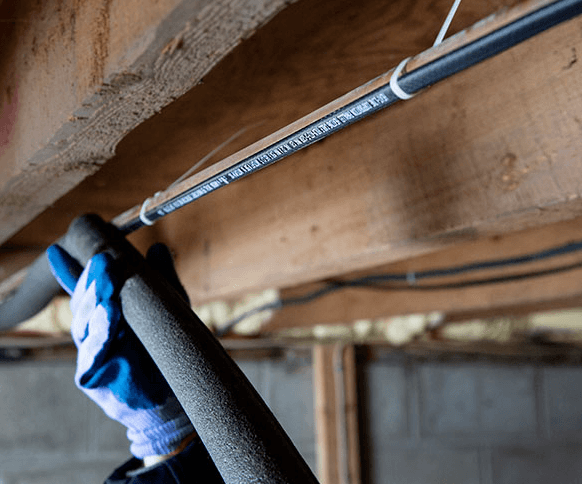The Guide To Insulating Water Supply Pipes Like A Pro
As a contractor, you know that your customers rely on you to help protect their homes from the various elements. Winter has arrived, and with it comes cold weather. This harsh reality can have serious consequences if not properly prepared for. One of the most important things you can do for your customers this season is to insulate their water supply pipes.
Winter temperatures spell trouble for exposed plumbing: frozen pipes prevent water from flowing throughout the home, resulting in costly repairs. But why risk leaving pipes vulnerable when investing in insulation provides peace of mind? Learn more about insulating water supply pipes to protect your plumbing during winter!

Insulating Cold & Hot Water Pipes
One of the most important things to remember when insulating water supply pipes is that they must be insulated both in winter and summer! During cold weather, hot water pipes should also be wrapped with insulation. This will help prevent condensation on the outside of the pipe, which can lead to potentially serious leaks later on.
Cold Water Pipes:
When insulating cold water pipes, there are two main things to remember: the type of insulation and the location.
- Type Of Insulation: When it comes to insulation, you have several options, including fiberglass pipe wrap, rubber foam insulation sleeves, or even pre-slit foam pipe jackets that slip over existing pipes. Fiberglass pipe wrap is likely the best option for cold water pipes as it is durable and easy to install.
- Location: The location of the pipes will affect your insulation strategy. For example, if the pipes run through an exterior wall or attic space, they should be insulated on all sides with either foam insulation sleeves or pre-slit foam jackets. If the pipes are in an interior wall or ceiling, they should be insulated with fiberglass pipe wrap along only their exterior surface.
Once you’ve wrapped your water supply pipes, you can rest assured that they will be well-protected from the harsh winter elements.
Hot Water Pipes:
When insulating hot water pipes, you must be just as diligent about protecting against winter weather. To properly wrap cold water pipes, you should consider House Pipe Insulation that leads directly from the boiler or water heater. This will help keep your heating system running optimally and prevent heat loss in these areas.
When choosing the right type of insulation for hot water pipes, there are some factors to consider. For example, you may choose a pipe wrap specifically designed for high-temperature applications, such as fiberglass wrap with a polyester scrim backing.
Where To Insulate Pipes?
Once you’ve chosen the right type of House Pipe Insulation for your hot water pipes, you need to consider where to apply it. This will depend on both the location and length of the pipe. For example, if the pipes run through an attic or exterior wall, they should be insulated along all sides with either foam sleeves or pre-slit foam jackets. If the pipes are in an interior wall or ceiling, they should be insulated with fiberglass wrap along only their exterior surface.
When To Insulate Pipes?
Before the winter temperatures set in, it is important to take the time to properly insulate your water supply pipes. This will help ensure a safe and efficient performance of your plumbing system and prevent any potential damage that may result from cold weather.
Insulate Your Pipes On Time With Tools From Fix & Feed
Poorly insulated pipes can cost homeowners much money in the long run and cause unnecessary headaches and stress. With the help of Fix & Feed hardware store, however, you don’t have to spend sleepless nights worrying about pipe maintenance.
Our top-grade materials and expert tools are designed to get the job done quickly and reliably. And although insulation may not seem like an exciting project, it’s essential for protecting your plumbing system from costly damages. Insulate your pipes on time with tools from Fix & Feed hardware store today.
